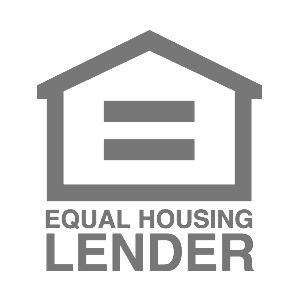
There are two main types of interest rates: fixed and variable. In most cases, a fixed rate is ideal since it involves less financial risk to the borrower. Still, a variable interest rate can be beneficial in a few specific circumstances.
In This Article
What is a variable interest rate?
A variable interest rate is a rate that can go up or down over time. Usually, the rate changes when there’s a shift in a certain market condition, like an interest rate hike from the Federal Reserve. If a change like this causes your interest rate to rise, your monthly debt payment will likely rise, too.
When shopping for a new loan, you may be able to choose fixed-rate financing—which means you’ll have a set interest rate for the duration of your payment—especially if your credit is in good condition. But the following products often have variable rates, regardless of your credit or other qualifications:
- Home Equity Lines of Credit (HELOCs)
- Adjustable-Rate Mortgages (ARMs)
- Credit cards
- Private student loans
Variable interest rates vs. fixed interest rates: What’s the difference?
If a loan has a fixed interest rate, the interest rate will stay the same over the life of the loan. That means, unlike with variable loan rates, you’ll know your set monthly payment toward principal and interest in advance, as well as the total amount of interest fees you’ll pay over the life of the loan.
Fixed interest rates are common for many financial products, including personal loans, mortgages and home equity loans (HELoans).
Other loans that combine both fixed and variable interest rates are called “hybrid” loans. With a hybrid loan, you could have a fixed interest rate for a certain period of time, and then switch to variable interest rates for the remainder of the loan.
For example, if you have a 5/1 ARM from the FHA, the interest rate will stay the same for the first five years of your loan payment and then change by as much as one percent each year thereafter.
There are also credit cards with promotional interest rates that only last a limited time. With one of these cards, you might be charged 0% APR on balance transfers or credit card purchases for a set period of time after opening the account—often 12 months or more—and then pay a variable interest rate after the introductory period ends.
How are variable interest rates determined?
The interest rates on variable-rate loans change according to a “benchmark” or “index” rate. If you have a loan or a credit card with a variable rate, it may be based on one of the following:
- London Interbank Offered Rate, or LIBOR (for financing received before Dec. 31, 2021)
- The Secured Overnight Financing Rate, or SOFR (for financing received after Dec. 31, 2021)
- Ameribor
- Wall Street Journal (WSJ) prime rate
In most cases, the rate you pay equals the benchmark rate plus a markup from the lender, also known as a “spread” or “margin.” Your markup often depends on your credit: the better your credit, the lower your markup and interest rate.
Variable interest rates also change periodically, depending on the terms of your loan. Some credit issuers change rates at the start of each billing cycle that follows a change in the prime rate, while others adjust quarterly. They may also have a cap on how much your rate can change each period or over the life of your loan.
Pros and cons of variable interest rates
Pros
- Initial APR may be lower than market rate
- Can save you money if you pay off the debt before rates adjust
- May be easier to qualify for than fixed rates
Cons
- Could have a higher risk of default than fixed rates
- Your interest charges will increase if rates go up
- Future payment amounts are unpredictable
Are variable interest rates right for you?
Variable-rate loans can be great cost-saving tools for certain borrowers. For example, someone who plans to “flip” a house could take out an ARM, renovate and sell the home, and then pay off the loan before the rate adjustment period starts.
For most borrowers, however, variable interest rates can tempt them to take on high-risk debt. So if you’re interested in taking on financing with a variable rate, be sure to do the math first. There’s a possibility of the rate going up more than once, so you’ll need to make sure you have breathing room in your budget to cover debt payments that increase at some point in the future.
Written by Sarah Brady | Edited by Rose Wheeler
Sarah Brady is a financial writer and speaker who’s written for Forbes Advisor, Investopedia, Experian and more. She is also a former Housing Counselor (HUD) and Certified Credit Counselor (NFCC).
All personal loans made by WebBank.
Eligibility for a home equity loan or HELOC up to the maximum amount shown depends on the information provided in the home equity application. Depending on the lender, loans above $250,000 may require an in-home appraisal and title insurance. Depending on the lender, HELOC borrowers must take an initial draw of the greater of $50,000 or 50% of the total line amount at closing, except in Texas, where the minimum initial draw at closing is $60,000; subsequent HELOC draws are prohibited during the first 90 days following closing; after the first 90 days following closing, subsequent HELOC draws must be $1,000, or more, except in Texas, where the minimum subsequent draw amount is $4,000.
The amount of time it takes to get funds varies. It is measured from the time the lender receives all documents requested from the applicant and depends on the time it takes to verify information provided in the application. The time period calculation to get funds is based on the first 4 months of 2023 loan fundings, assumes the funds are wired, excludes weekends, and excludes the government-mandated disclosure waiting period.
For Texas home equity products through Prosper, funds cannot be used to pay (in part or in full) non-homestead debt at account opening.
Depending on the lender, qualified home equity applicants may borrow up to 80% – 95% of their primary home’s value and up to 80% – 90% of the value of a second home. In Texas, qualified applicants may borrow up to 80% of their home’s value. HELoan applicants may borrow up to 85% of the value of an investment property (not available for HELOCs).
Home equity products through Prosper may not be available in all states.
All home equity products are underwritten and issued by Prosper’s Lending Partners. Please see your agreement for details.
Prosper Marketplace, Inc. NMLS# 111473
Licensing & Disclosures | NMLS Consumer Access
